Bone tumors and tumor-like lesions
1/26
There's no tags or description
Looks like no tags are added yet.
Name | Mastery | Learn | Test | Matching | Spaced |
|---|
No study sessions yet.
27 Terms
Bone tumors and tumor-like lesions (3)
Osteosarcoma
Chondrosarcoma
Ewing Sarcoma
Osteosarcoma Pathogenesis
Tumor fills the bone and forms a soft tissue mass on both sides of the bone
What bones does Osteosarcoma Typically Take Place (3)
Proximal tibia
Distal femur
Proximal humorous
Osteosarcoma Mutations (2)
RB, TP53
Osteosarcoma Histology (2)(1)
Primitive trabeculae (Osteoid or Immature bone)
Thought to arise from primitive bone-forming cells
Hyperchromatic nuclei
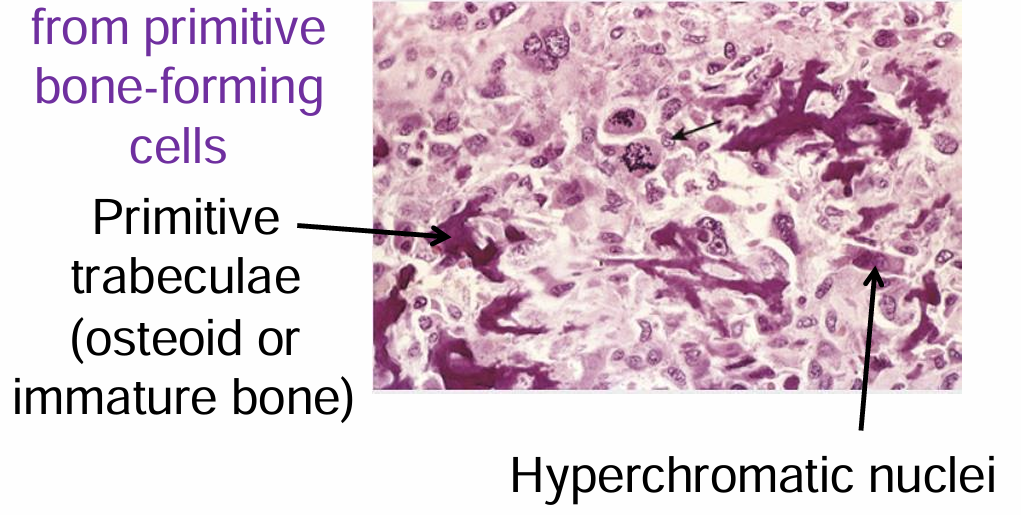
Osteosarcoma Clinical presentation (4)
Chronic bone pain
May be palpable mass
Soft tissue extension
More radio dense
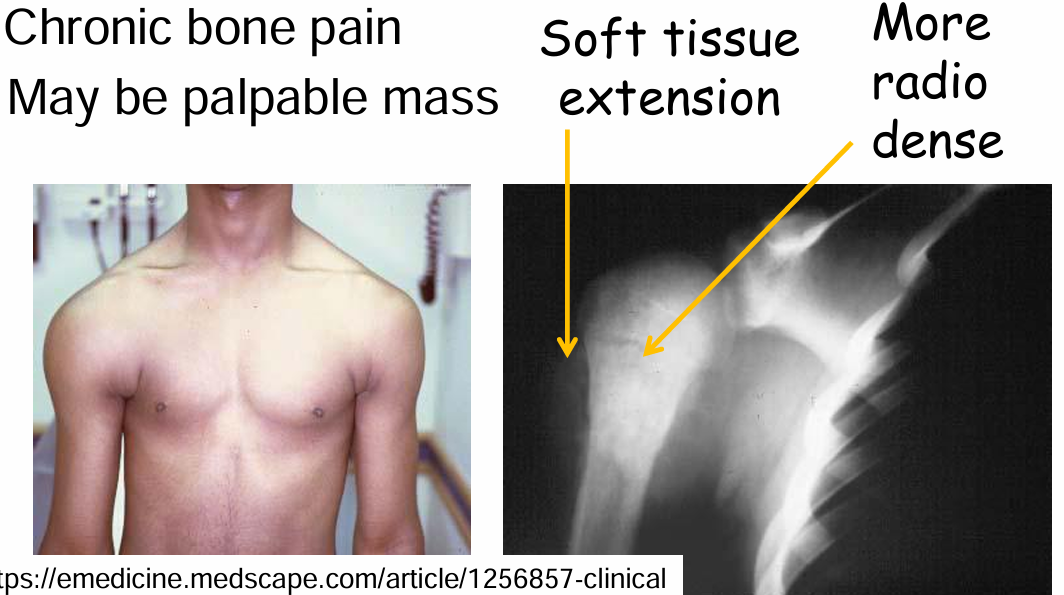
Osteosarcoma Another radiologic feature
Codman triangle
How does the Codman Triangle Occur (2)
Periosteum lifted off
Periosteal reaction (rim of reactive new subperiosteal bone)
Chondrosarcoma Commonality
Most common = “conventional type” 90%
Chondrosarcoma Produces
hyaline cartilage
Chondrosarcoma Age
greater than 40
Chondrosarcoma Location
axial skeleton (pelvis, ribs, shoulders)
Chondrosarcoma can be secondary to
secondary to preexisting enchondroma or osteochondroma
Chondrosarcoma Tumor Grade and Prognosis (3)
Vary from low grade →
Slow growing to high grade with high metastatic potential
Poor prognosis
Chondrosarcoma Symptoms
Local swelling and pain
Pathologic fracture as tumor grows
Ewing Sarcoma Age
80% are younger than 20
Ewing Sarcoma Origin
Cell of origin not known. May be mesenchymal stem cells or primitive neuroectodermal cells
Ewing Sarcoma Bones of Origin (2)
Most often in diaphysis of long bones and bones of the pelvis
20% are extraskeletal
Ewing sarcoma Genetic Mutation (3)
Translocation between chromosomes 11 and 22
FLI1 gene
EWSR1 gene
Ewing Sarcoma Gross morphology
Irregular tumor mass breaking through the bone cortex
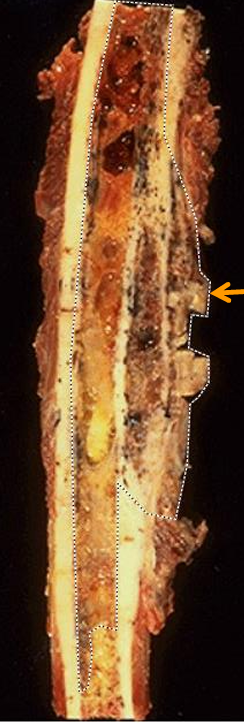
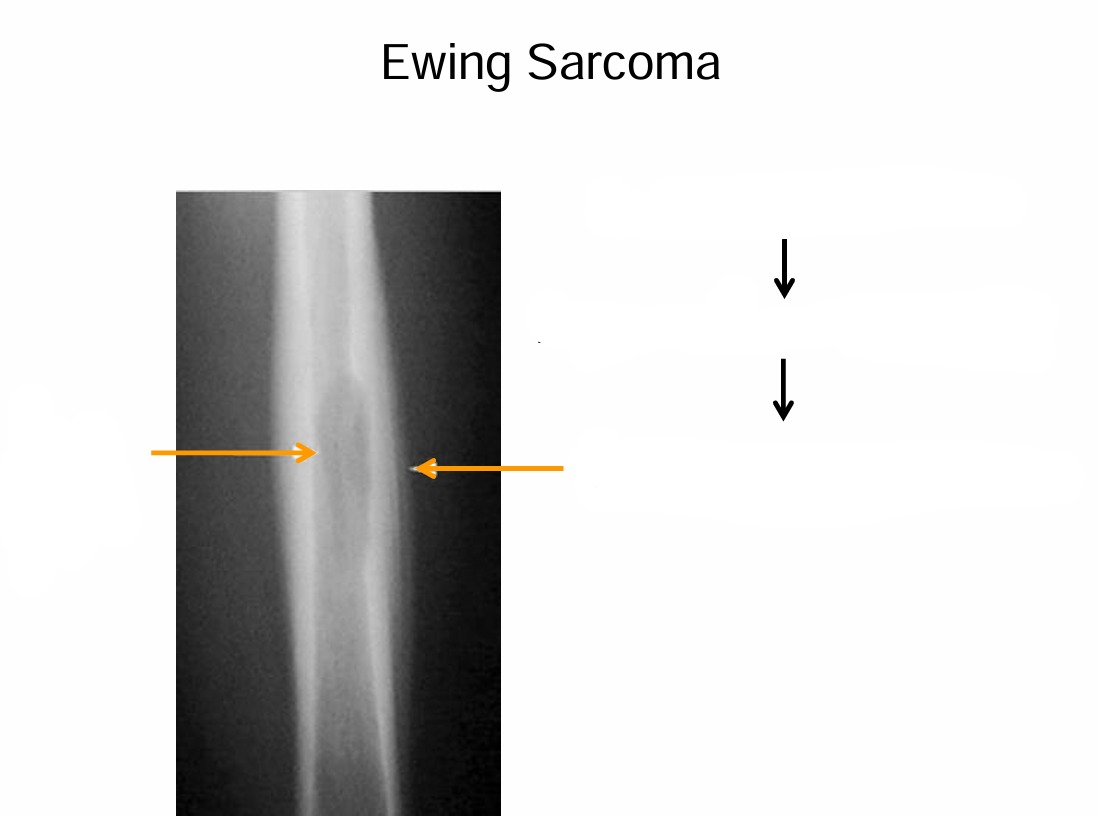
Ewing Sarcoma Radiology
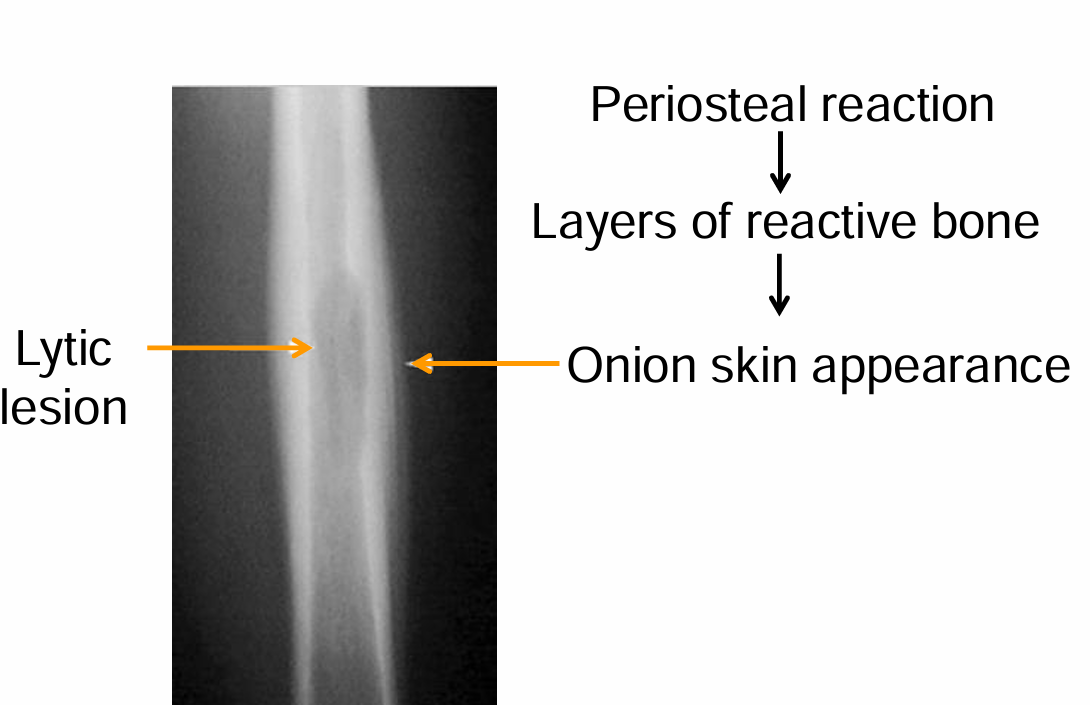
Ewing Sarcoma Histology
Sheets of small, round cells
Hyperchromatic nuclei
Little cytoplasm
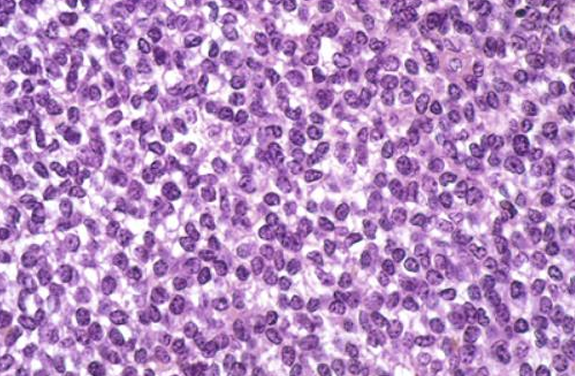
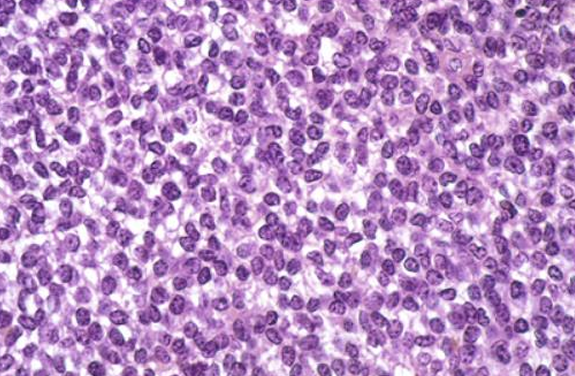
Ewing Sarcoma Histology - This is a tumor that was isolated from bone. What type of tissue is missing?
No bone and cartilage
Ewing Sarcoma Symptoms
Painful large masses
Tender, warm, swollen
Osteosarcoma Summary (3)
Bony Growth
Periosteal Reaction
Long bones, near joints
Chondrosarcoma Summary (2)
Cartilaginous Growth (Hyaline)
Axial Skeleton
Ewing Sarcoma Summary (5)
Unknown origin
Irregular tumor breaks through cortex
Long bones and pelvis
Periosteal Reaction
Genetic component